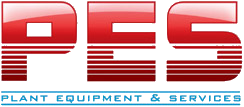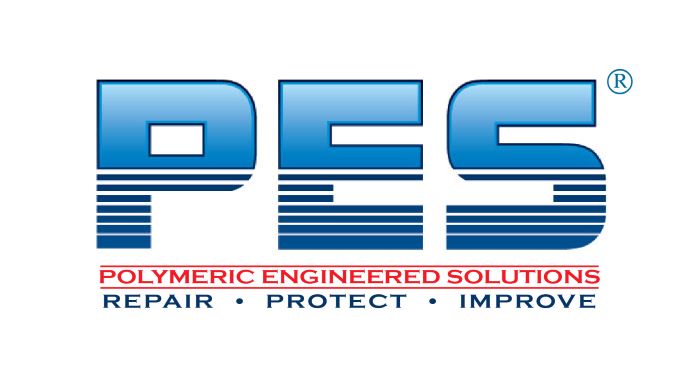PES 102 Power Metal Repair Fluid has extremely high thixotropic properties. It is common to fill pits in pump casings, impellers, and heat exchanger end covers.
PES 102 Power Metal Repair Fluid
PES 102 Power Metal Repair Fluid is a two component solvent free epoxy metal repair fluid. The product is great for resurfacing a wide range of metallic surfaces.
Typical Applications
Suitable for resurfacing damaged and worn pump casings, valve bodies, worn bearing housings, damaged flanges or used as an anti-slip system for metal surfaces when used in conjunction with aluminum oxide aggregate.
Surface Preparation
All oil and grease must be removed from the surface of the repair using an appropriate cleaner such as MEK. For optimum performance, the surface should be abrasive blasted to Nace Standard #2, SSPC-SP10, or Swedish Standard SA2.5 and a minimum blast profile of 3-4 Mils, (75 microns) using an angular abrasive. Once blast cleaned, the surface must be degreased and cleaned using MEK or similar type material. All surfaces must be repaired before gingering or oxidation occur.
PLEASE NOTE: For salt contaminated surfaces the area must be abrasive blast cleaned as mentioned above and left for 24 hours to allow any ingrained salts to come to the surface. After this 24 hour period the surface must be washed with MEK prior to brush blasting to remove the surface salts. This process must be repeated until all ingrained contaminants have been sweated out of the surface.
Where abrasive blast cleaning is not possible (excluding salt contaminated surfaces) the surface should be roughened by MBX needle gun or grinding.
Mixing and Application
Warm the Base component to 59-77°, (15-25°C) before mixing and do not apply when the ambient or substrate temperature is below 5°C or the relative humidity is above 90%.
The whole unit must be mixed in full. Ensure as much of the activator is dispensed into the base unit. Mix the two components using the spatula provided until a uniform material free of any streaks is achieved while ensuring no unmixed material is left on the spatula or on the sides of the base pot.
Using a short bristled brush or applicator tool, apply the material to the prepared surface.
Application should be carried out in two coats. To achieve the correct film thickness of 10 Mils, (250 microns) per coat a practical coverage rate of 15 sq. ft. (1.4 sq. m) per kg. should be aimed for. From the commencement of mixing the whole of the material should be used within 20-30 minutes at 68°F (20°C). For partial mixing, use a ratio of 5:1 by weight or 3:1 by volume. As soon as possible after application of the first layer, and after no longer than 6 hours, apply a further coat as above. If the maximum over-coating time is exceeded, the first layer should be brush blasted or abraded before applying the second coat.
Cure Times
At 68°F (20°C) the applied materials should be allowed to harden for the times indicated below before being subjected to the conditions indicated. These times will be extended at lower temperatures and reduced at higher temperatures:
- Usable Life – 30 minutes
- Movement without load or immersion – 1.5 hours
- Machining and light loading – 2 hours
- Full loading – 2 days
- Immersion – 3 days
For Optimum Performance
After an initial curing period of at least 4 hours at 68°F (20°C), raising the cure temperature progressively to 140 – 212°F (60 – 100°C) for up to 8 hours will result in improved mechanical, thermal and chemical resistance properties.
Over-coating times
- Minimum – the applied material can be over-coated as soon as it is touch dry.
- Maximum – the over-coating time should not exceed 6 hours.
- Where the maximum over-coating time is exceeded, the material should be allowed to harden before being abraded or flash blasted to remove surface contamination.
Storage Life
5 years if unopened and stored in normal dry conditions 59 – 86°F (15-30°C)
Technical Data and Performance
| Volume Capacity | 26cu.in. (440cc) per Kg. |
|---|---|
| Compressive Strength ASTM D695 | 15,300psi (1075kg/cm2) |
| Tensile Shear Adhesion ASTM D1002 | 2630psi (185kg/cm2) |
| Flexural Strength ASTM D790 | 10,000psi (703kg/cm2) |
| Hardness Rockwell R ASTM D785 | 100 |
| Corrosion Resistance ASTM B117 | 5000 hours |
Health and Safety
Please ensure good practice is observed at all times during the mixing application of this product. Protective gloves must be worn during the mixing and application of this product. Before mixing and applying the material please ensure you have read the fully detailed Safety Data Sheet.
For more information about PES 102 Power Metal Repair Fluid, don’t hesitate to contact us here at PES Solutions with the link below!

